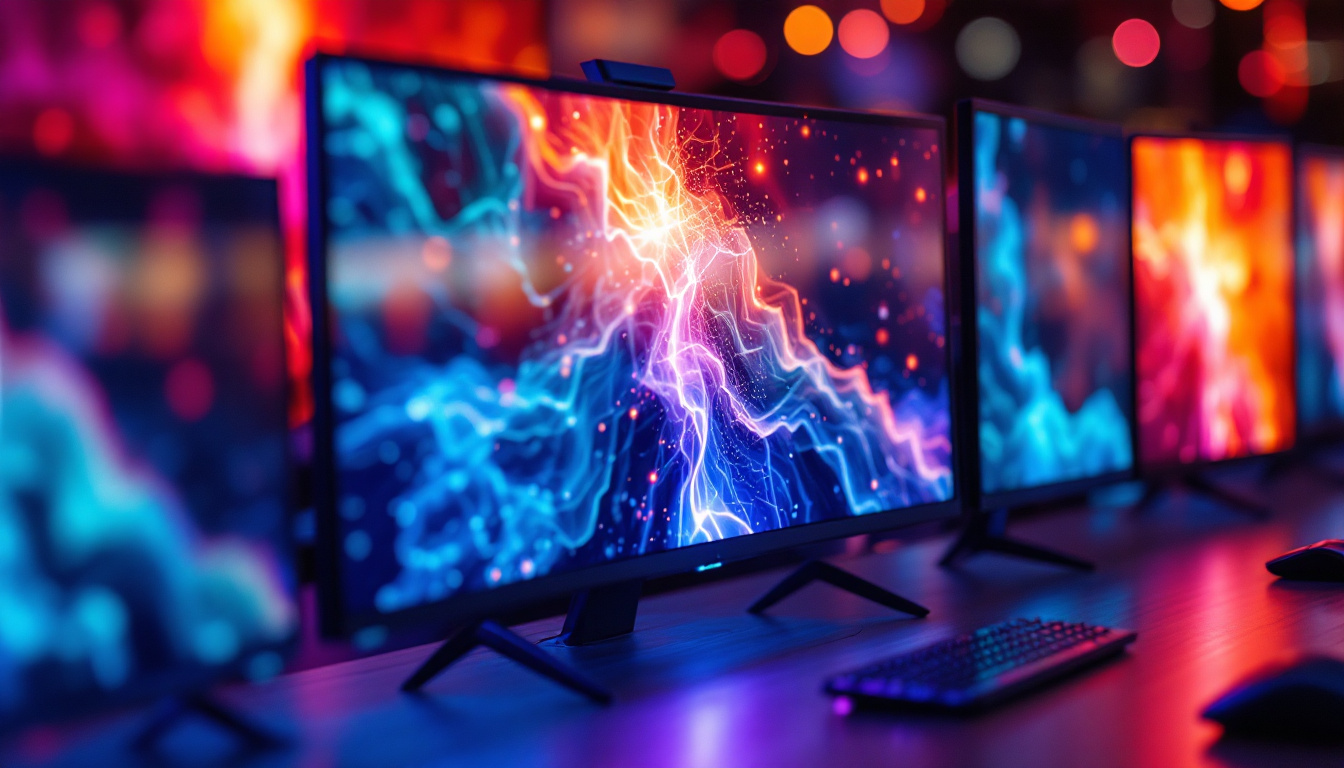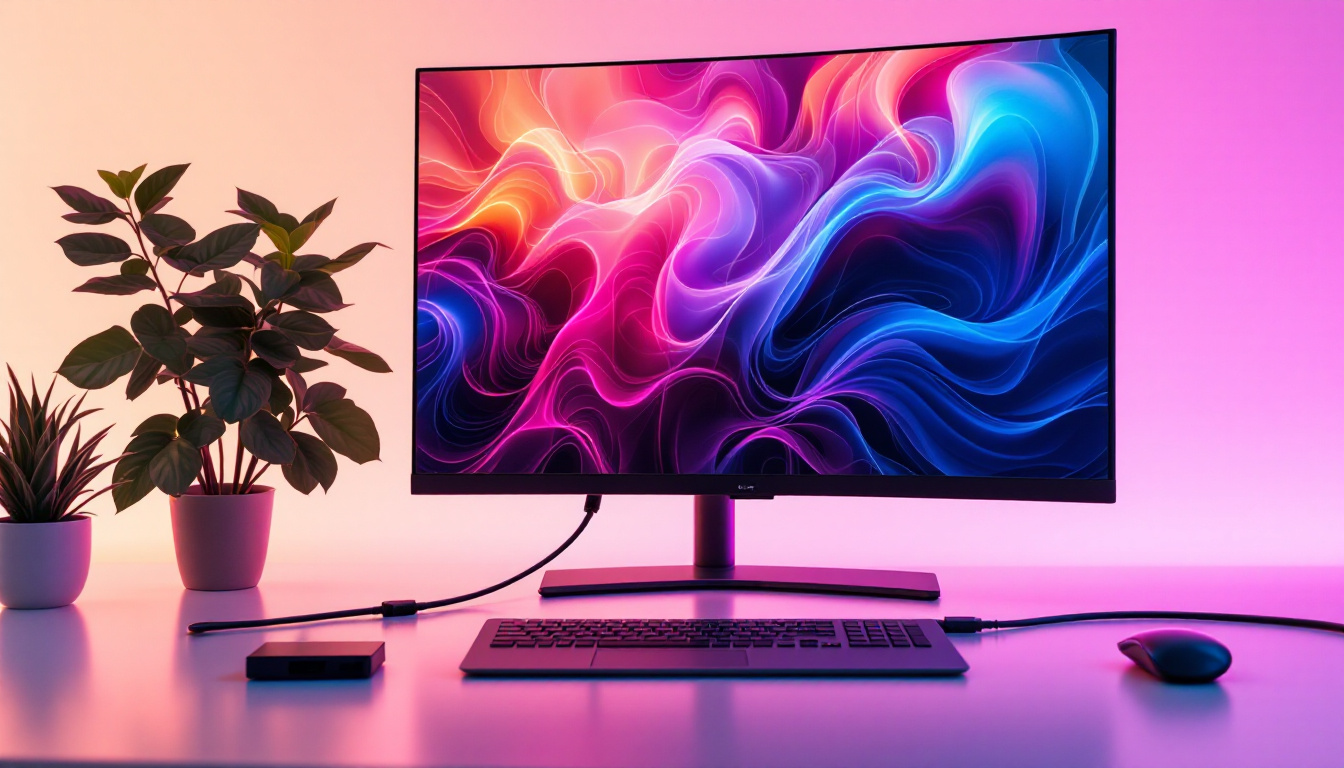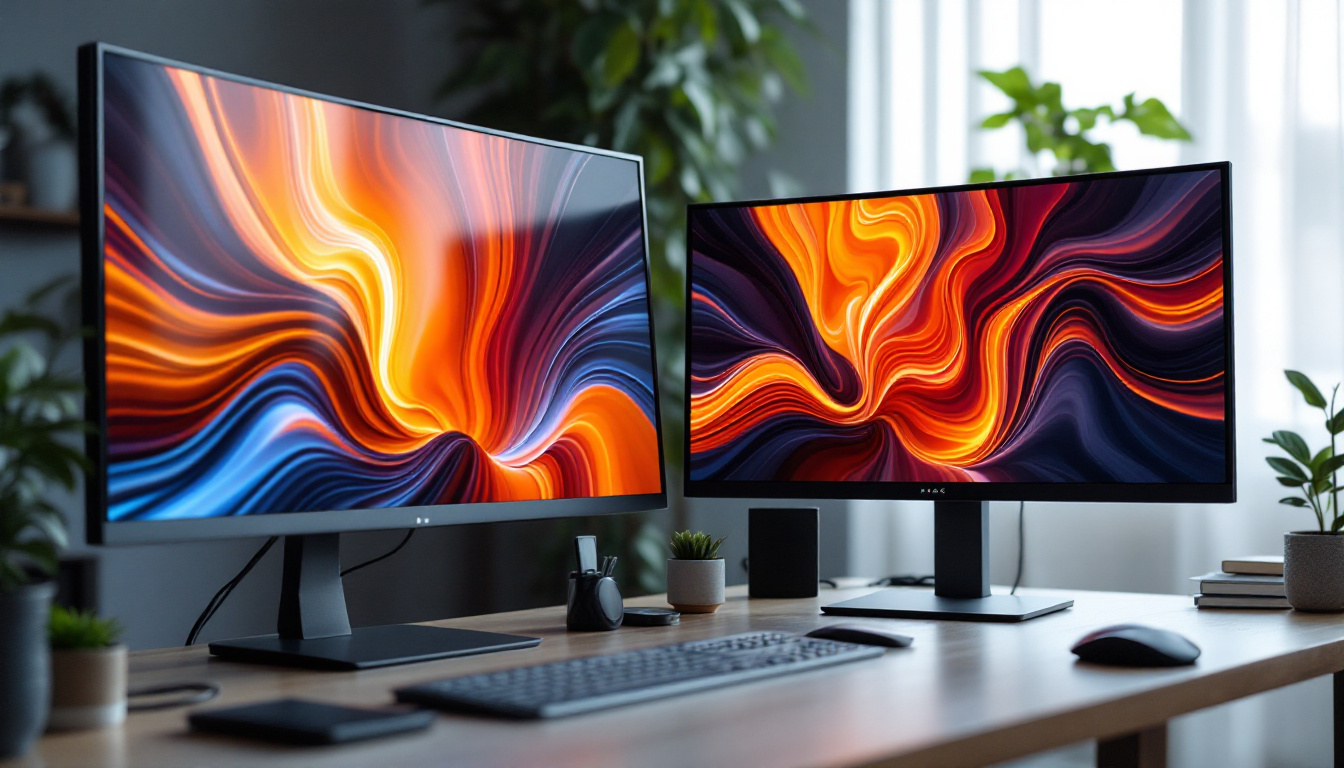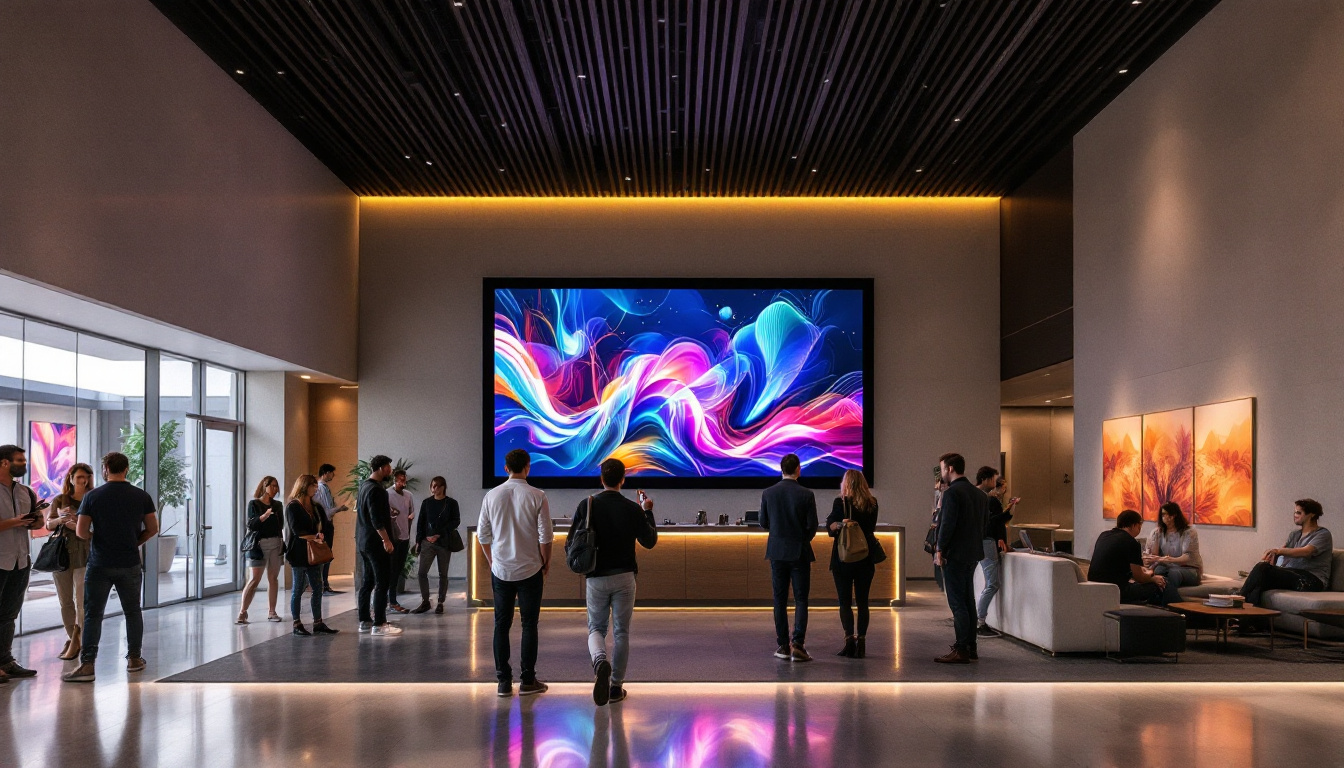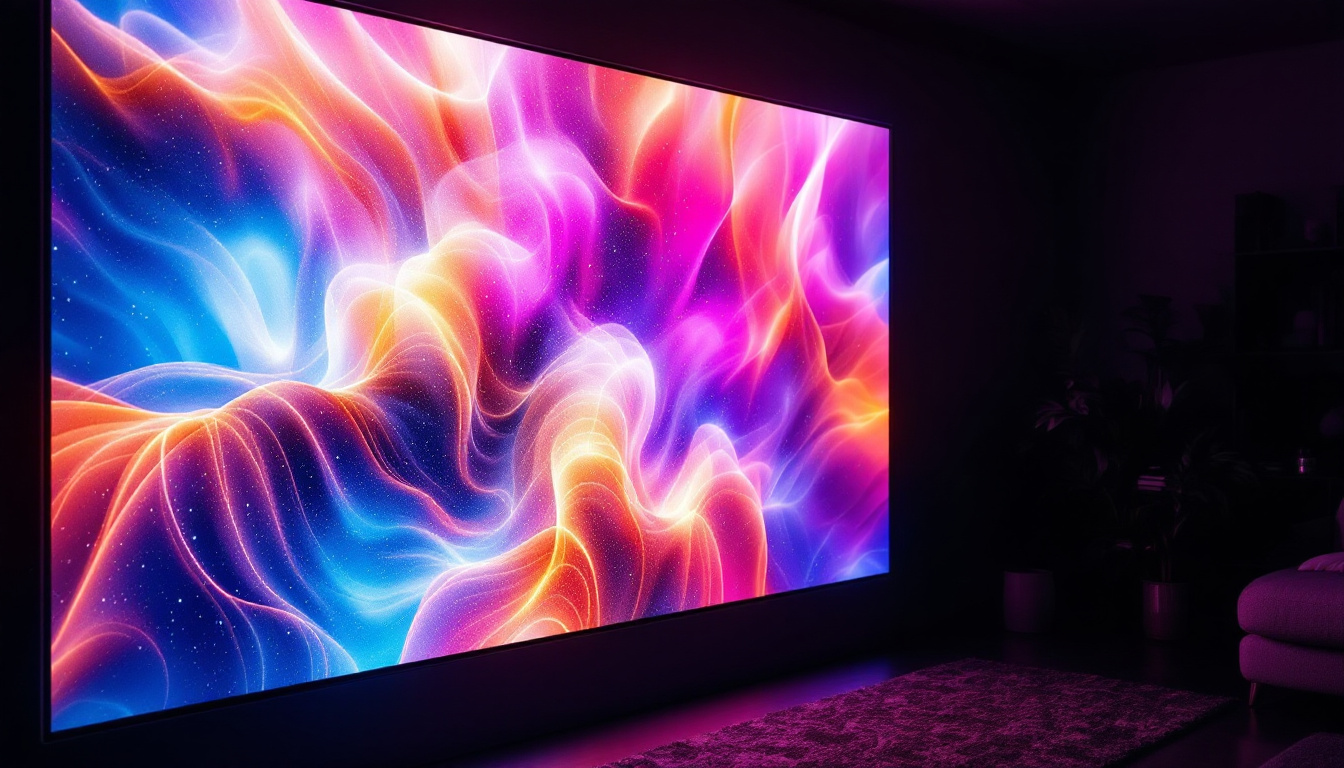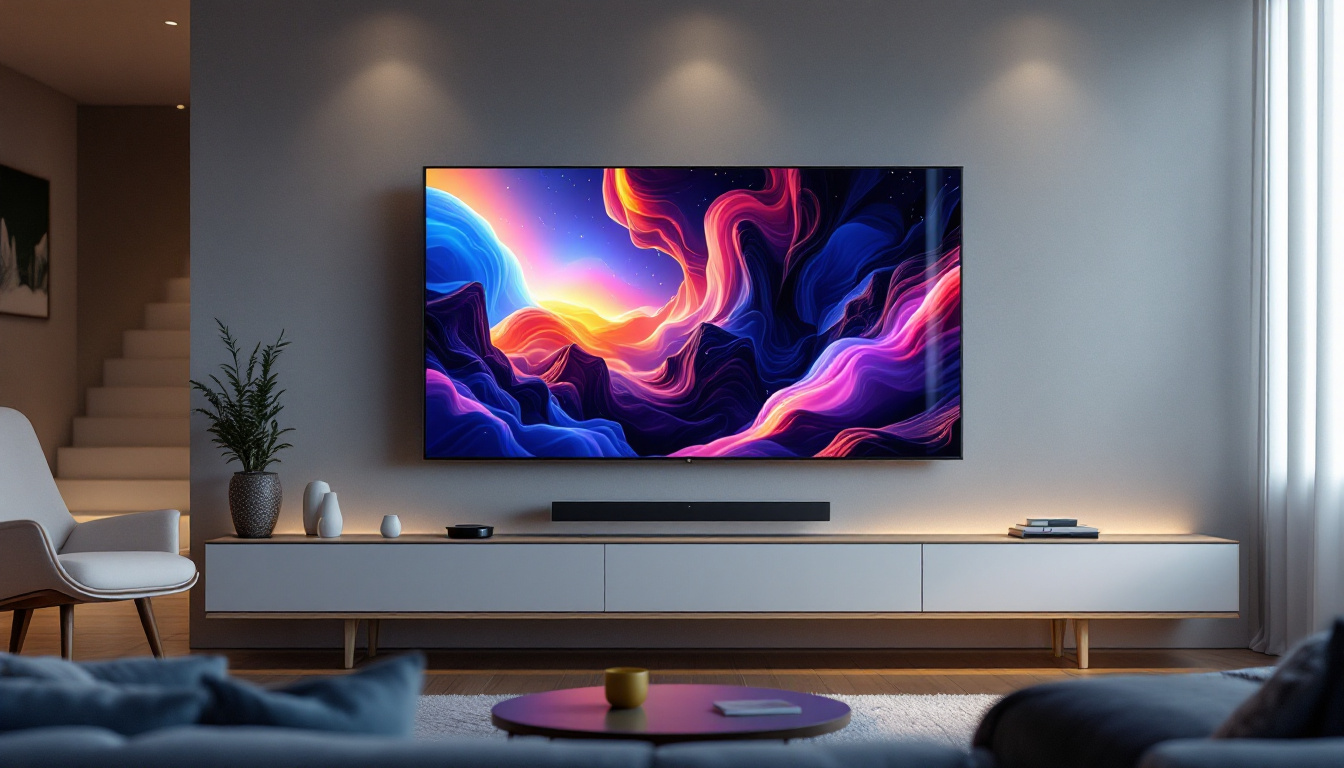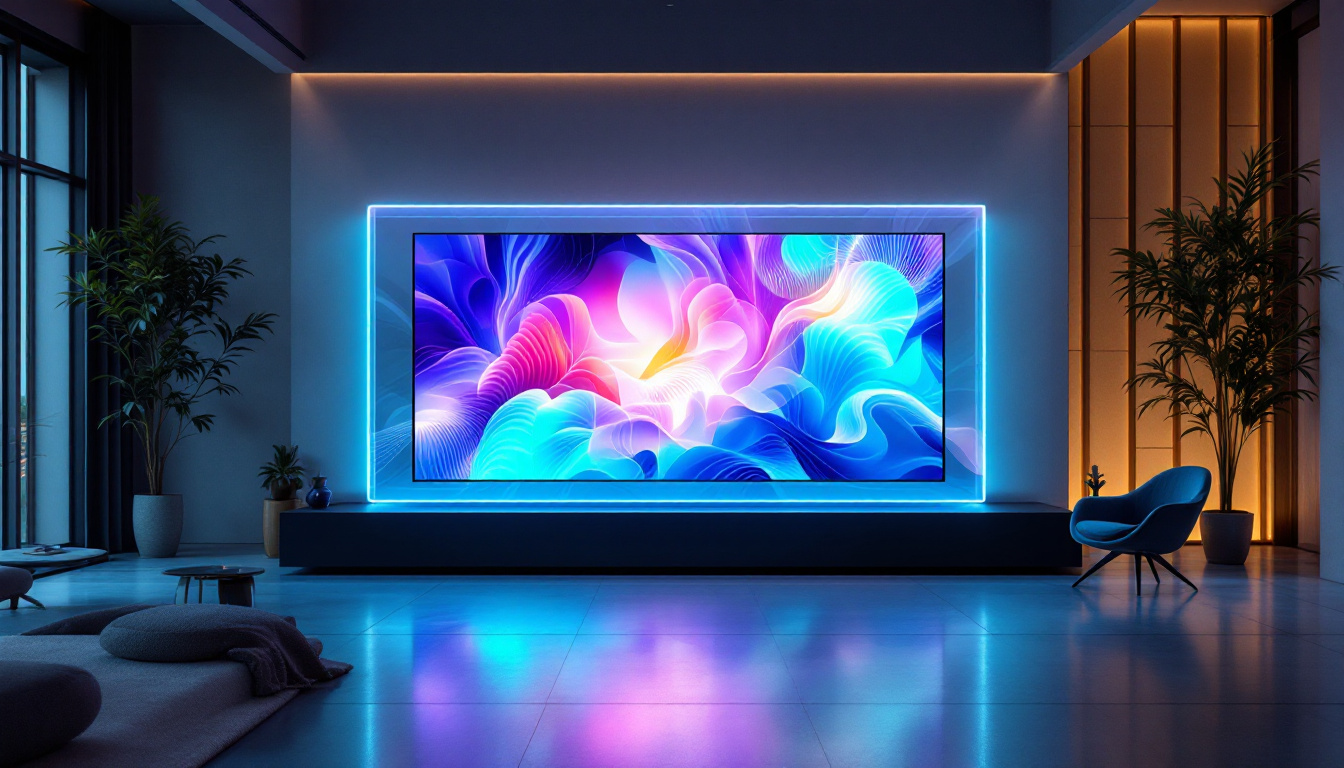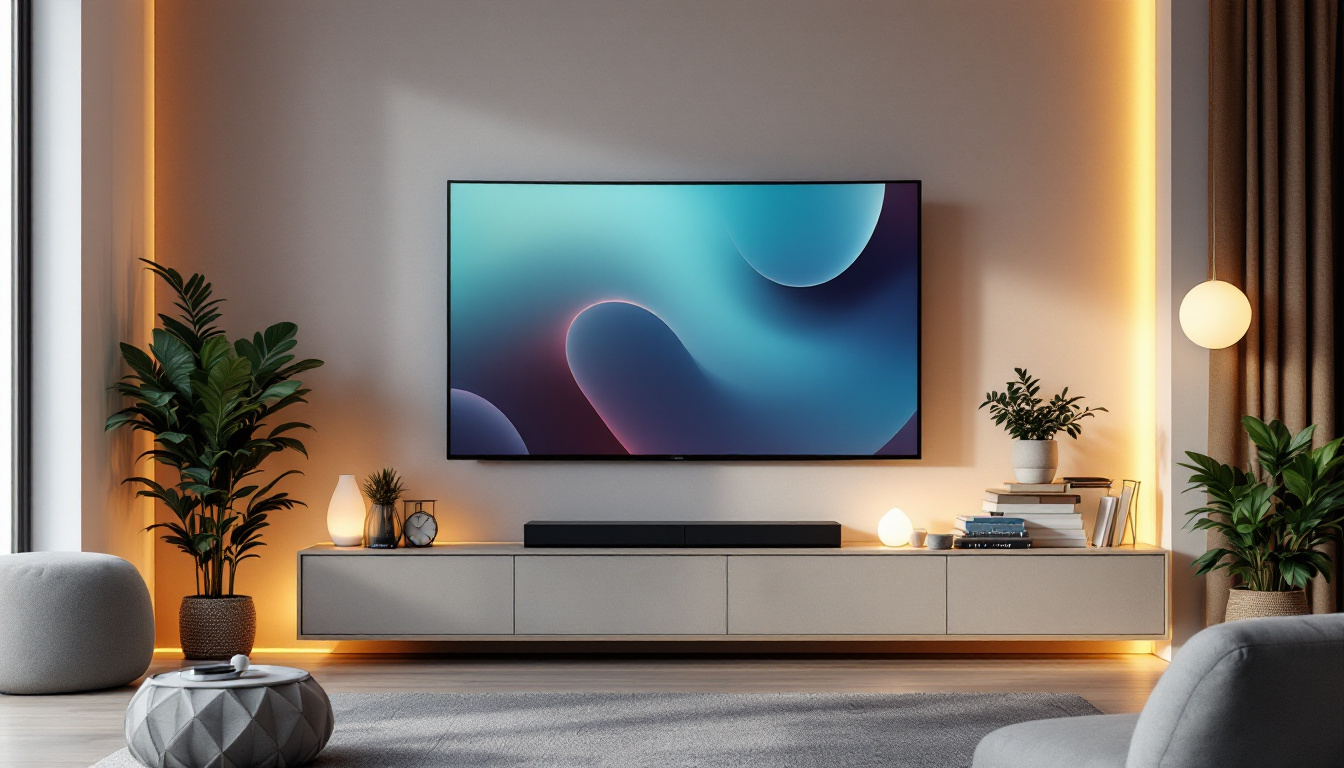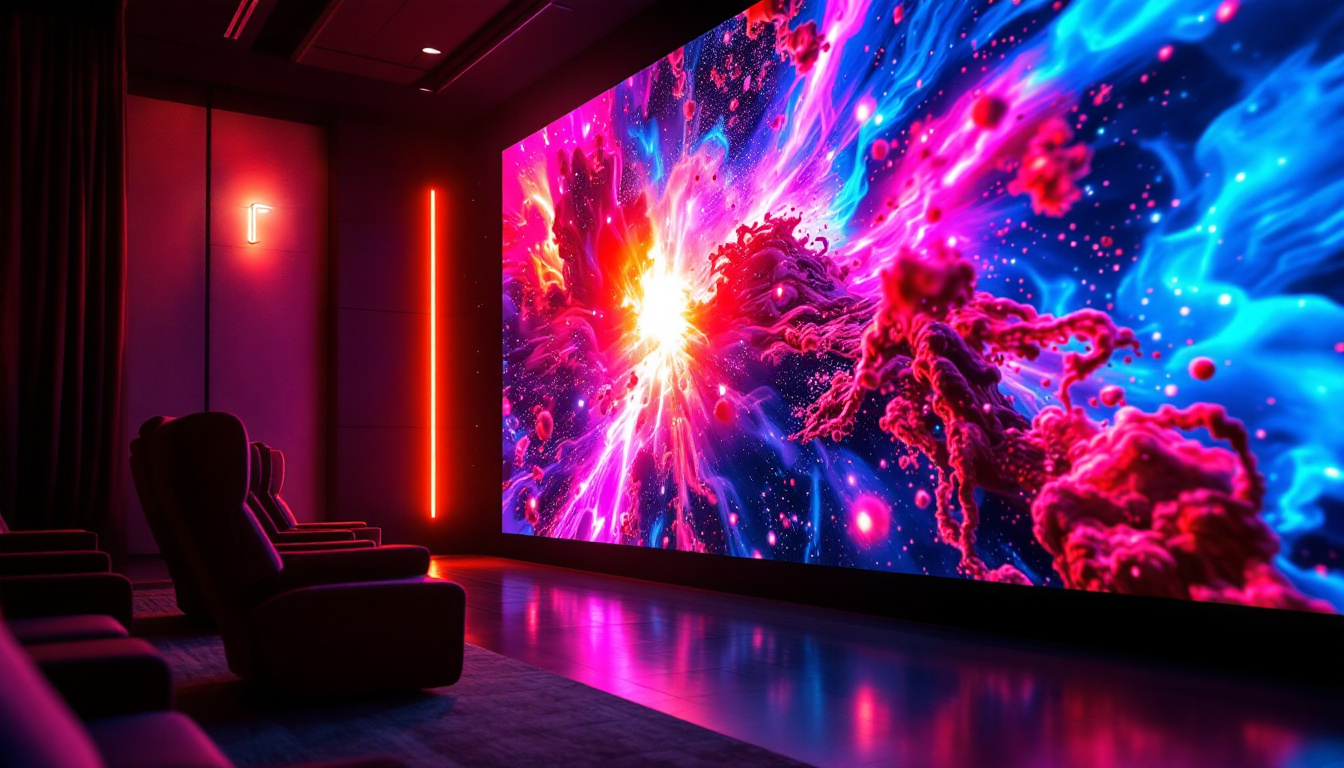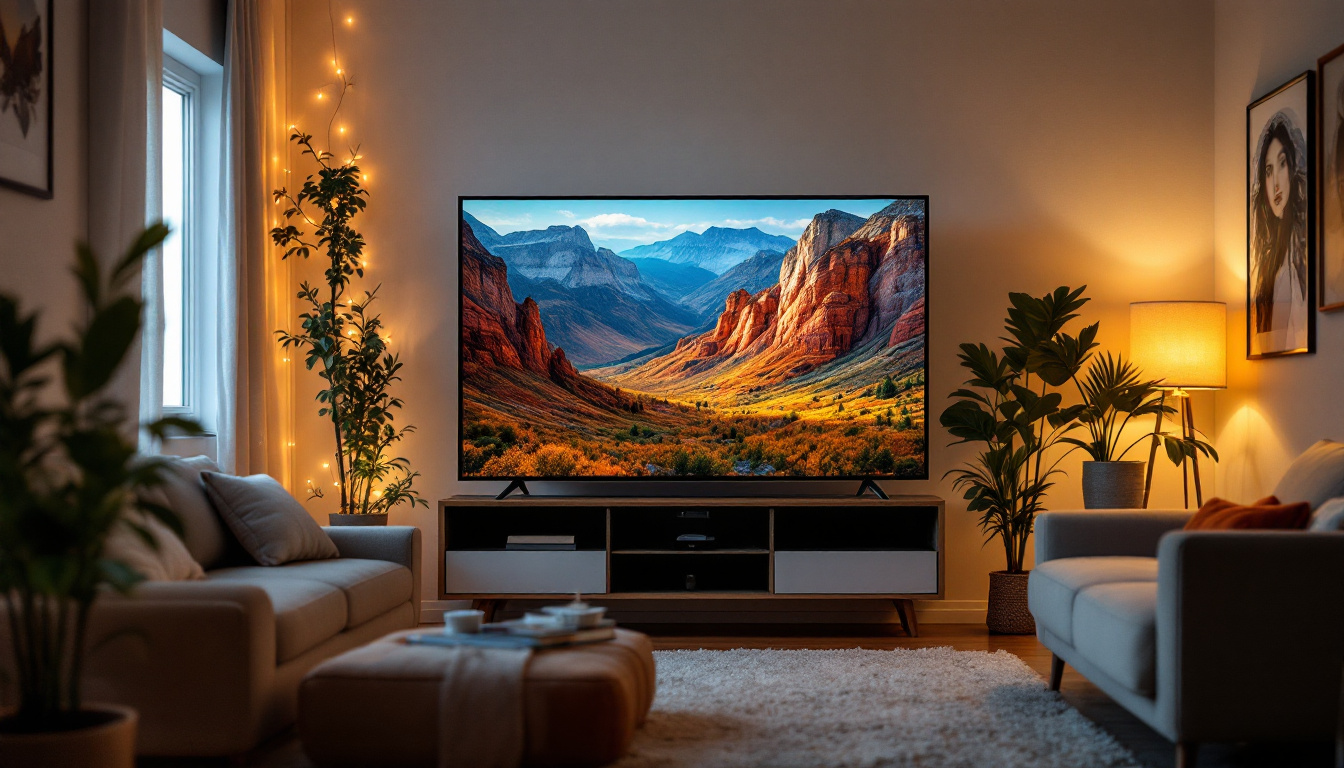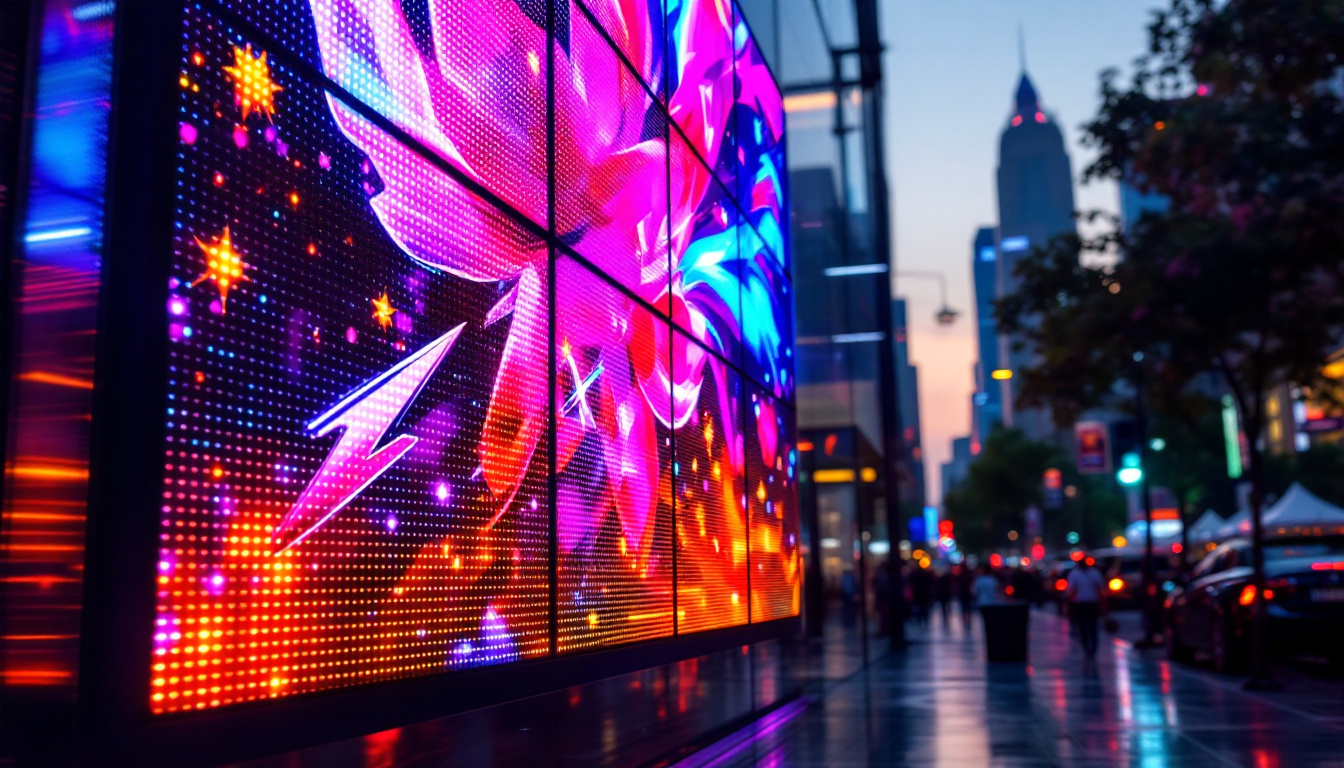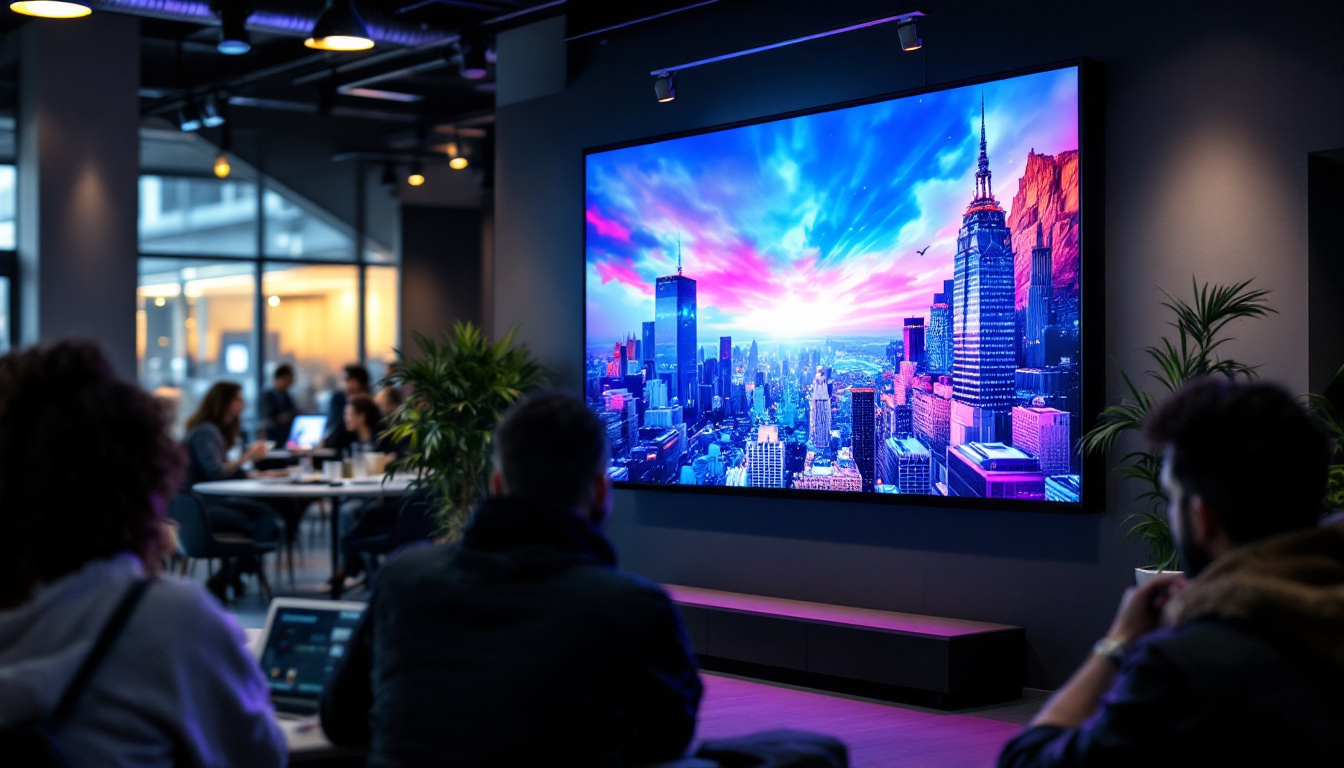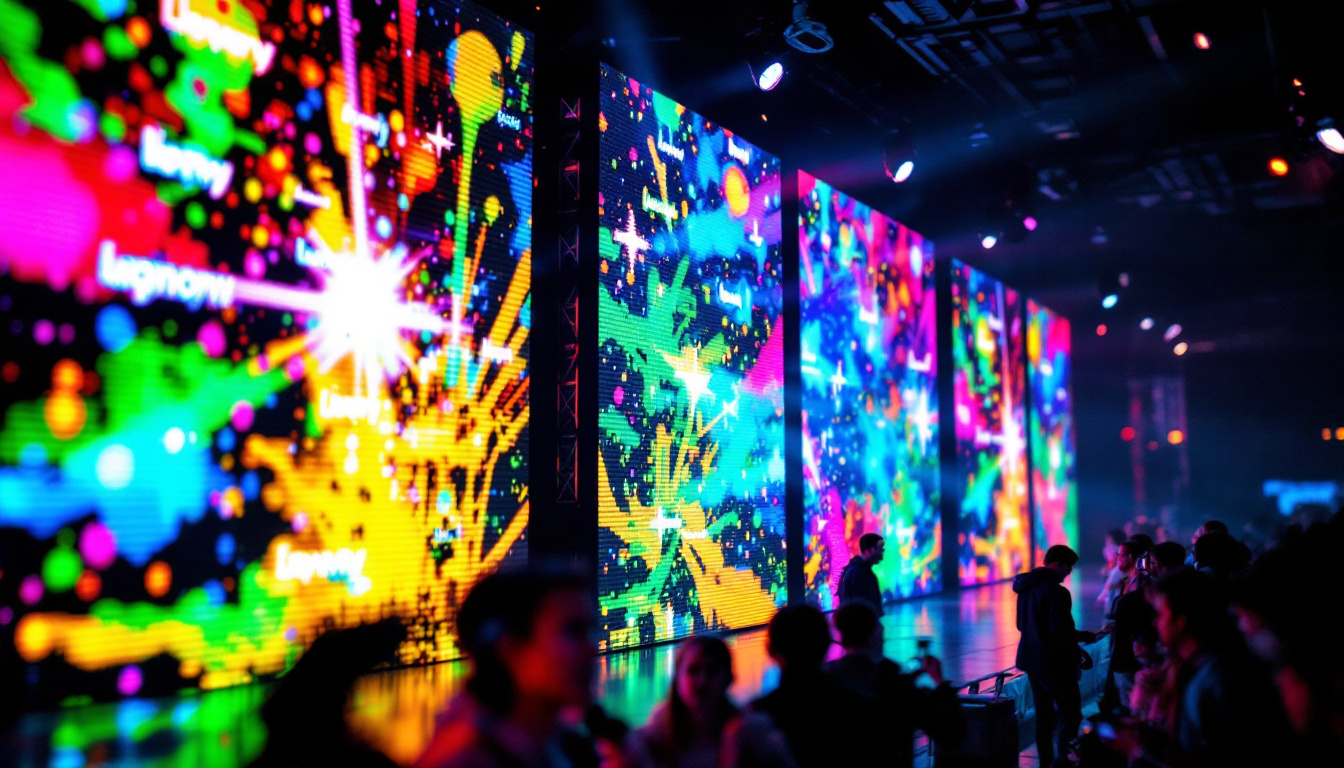In the ever-evolving world of technology, the display panel of a monitor plays a crucial role in delivering a superior visual experience. Among the various types of display technologies, LCD (Liquid Crystal Display) monitors have gained immense popularity, particularly those that utilize LED (Light Emitting Diode) backlighting. This article delves into the different types of LCD monitor panels, focusing on LED displays, their advantages, and their applications.
Understanding LCD Technology
LCD technology has revolutionized the way we experience visual content. At its core, an LCD panel uses liquid crystals to modulate light, creating images on the screen. The technology is characterized by its ability to produce sharp, vibrant images while consuming less power compared to older display technologies like CRT (Cathode Ray Tube). This efficiency not only reduces electricity costs but also contributes to a lower environmental impact, making LCDs a more sustainable choice for consumers and businesses alike.
However, not all LCD panels are created equal. The quality of an LCD monitor can vary significantly based on the type of panel used. This is where LED backlighting comes into play, enhancing the overall performance of LCD monitors. The evolution of LCD technology has led to the development of various panel types, such as IPS (In-Plane Switching) and TN (Twisted Nematic), each catering to different needs, from gaming to professional graphic design.
What is LED Backlighting?
LED backlighting refers to the use of Light Emitting Diodes to illuminate the liquid crystals in an LCD panel. Unlike traditional fluorescent backlighting, which can produce uneven lighting and lower contrast ratios, LED backlighting offers a more uniform light distribution and improved color accuracy. This advancement has allowed manufacturers to create thinner and lighter displays without sacrificing image quality, making them ideal for portable devices like laptops and tablets.
There are two primary types of LED backlighting: edge-lit and full-array. Each has its own set of advantages and disadvantages, impacting the overall viewing experience. The choice between these two types often depends on the intended use of the display, as well as budget considerations. For instance, casual viewers may find edge-lit displays sufficient for everyday tasks, while enthusiasts and professionals may prefer the enhanced capabilities of full-array systems for tasks requiring precise color representation.
Edge-Lit vs. Full-Array LED
Edge-lit LED displays place the LEDs along the edges of the screen, relying on light diffusion to illuminate the entire panel. This design allows for thinner monitors, making them more aesthetically pleasing and easier to mount on walls. However, edge-lit displays can sometimes suffer from uneven brightness and limited contrast ratios, which may be noticeable in darker scenes or when viewing content in dimly lit environments. Additionally, the viewing angles can be more restricted, affecting the experience when multiple viewers are present.
On the other hand, full-array LED displays have a grid of LEDs behind the entire screen. This configuration allows for better control over local dimming, resulting in deeper blacks and enhanced contrast. While full-array displays tend to be thicker and more expensive, they offer superior picture quality, making them a preferred choice for professional applications. Moreover, these displays often support advanced features like HDR (High Dynamic Range), which further enhances the viewing experience by providing a wider range of colors and brightness levels. As technology continues to advance, we can expect even more innovations in LCD and LED technologies, further blurring the lines between reality and digital imagery.
Types of LCD Monitor Panels
LCD monitors can be classified into several panel types, each with distinct characteristics. The most common types include Twisted Nematic (TN), In-Plane Switching (IPS), and Vertical Alignment (VA). Understanding these panel types can help consumers make informed decisions based on their specific needs.
Twisted Nematic (TN) Panels
TN panels are known for their fast response times and affordability, making them a popular choice for gamers and budget-conscious consumers. The technology behind TN panels allows for quick pixel switching, reducing motion blur during fast-paced action scenes.
However, TN panels come with their drawbacks. They typically have narrower viewing angles and less accurate color reproduction compared to other panel types. This makes them less suitable for tasks that require precise color work, such as graphic design or photo editing.
In-Plane Switching (IPS) Panels
IPS panels have gained a reputation for their superior color accuracy and wider viewing angles. Unlike TN panels, which have liquid crystals that twist to block light, IPS panels align the crystals parallel to the glass substrate. This arrangement allows for more consistent color reproduction and better viewing angles, making IPS panels ideal for creative professionals.
While IPS panels generally have slower response times compared to TN panels, advancements in technology have led to the development of fast IPS panels that cater to gamers as well. The trade-off between response time and color accuracy is an important consideration for potential buyers.
Vertical Alignment (VA) Panels
VA panels strike a balance between the strengths of TN and IPS panels. They offer excellent contrast ratios, making them suitable for watching movies and playing games in dark environments. The liquid crystals in VA panels align vertically when no voltage is applied, allowing for deeper blacks and vibrant colors.
However, VA panels may have slower response times than TN panels, which can lead to motion blur in fast-moving scenes. They also have narrower viewing angles compared to IPS panels, although they are generally better than TN panels in this regard.
Advantages of LED Displays
LED displays have become the preferred choice for many consumers due to their numerous advantages. Understanding these benefits can help users appreciate why LED backlighting has gained traction in the market.
Improved Energy Efficiency
One of the most significant advantages of LED displays is their energy efficiency. LED backlighting consumes less power than traditional fluorescent backlighting, resulting in lower energy bills and a reduced carbon footprint. This makes LED monitors an environmentally friendly option, appealing to eco-conscious consumers.
Additionally, the energy efficiency of LED displays contributes to longer lifespan, allowing users to enjoy their monitors for extended periods without the need for frequent replacements.
Enhanced Color Accuracy and Brightness
LED backlighting allows for improved color accuracy and brightness levels. With the ability to produce a wider color gamut, LED displays can render more vibrant and lifelike images. This is particularly beneficial for tasks that require precise color reproduction, such as graphic design, photo editing, and video production.
The increased brightness of LED displays also enhances the viewing experience in well-lit environments, making them suitable for various applications, from office work to gaming.
Thin and Lightweight Design
The design of LED monitors tends to be thinner and lighter than their traditional counterparts. This sleek design not only enhances the aesthetic appeal of the monitor but also makes it easier to transport and mount. Consumers looking for a modern and stylish addition to their workspace will find LED displays particularly attractive.
Moreover, the lightweight nature of these monitors allows for greater flexibility in terms of placement, whether on a desk or mounted on a wall.
Applications of LED Displays
LED displays have found applications across various industries, thanks to their versatility and performance. Understanding where these displays are commonly used can provide insight into their significance in today’s technology landscape.
Gaming
In the gaming world, LED displays are highly sought after for their fast response times and vibrant colors. Gamers benefit from the enhanced visuals and reduced motion blur, allowing for an immersive gaming experience. Many gaming monitors now feature high refresh rates and adaptive sync technologies, further enhancing performance and reducing screen tearing.
With the rise of competitive gaming, the demand for high-quality LED displays has surged, leading to the development of monitors specifically designed for esports and professional gaming.
Professional Workstations
For professionals in fields such as graphic design, video editing, and photography, color accuracy is paramount. LED displays, particularly those with IPS technology, provide the necessary color fidelity and wide viewing angles required for precise work. These monitors allow professionals to view their creations as they were intended, ensuring that colors are accurately represented across different mediums.
Additionally, the energy efficiency of LED displays makes them a practical choice for long hours of work, reducing fatigue and contributing to a more comfortable working environment.
Home Entertainment
In the realm of home entertainment, LED displays have become the standard for televisions and monitors. The combination of vibrant colors, high contrast ratios, and energy efficiency makes LED displays ideal for watching movies and playing video games at home. With the advent of 4K and HDR (High Dynamic Range) technology, LED displays continue to evolve, offering consumers an unparalleled viewing experience.
Moreover, the sleek design of LED monitors allows them to seamlessly integrate into modern home decor, enhancing the overall aesthetic of living spaces.
Conclusion
In conclusion, understanding the various types of LCD monitor panels and the advantages of LED backlighting is essential for making informed purchasing decisions. With options like TN, IPS, and VA panels, consumers can choose a monitor that best suits their needs, whether for gaming, professional work, or home entertainment.
LED displays stand out for their energy efficiency, improved color accuracy, and sleek design, making them a popular choice in today’s market. As technology continues to advance, LED displays will likely remain at the forefront of visual technology, providing users with exceptional viewing experiences for years to come.
Discover LumenMatrix’s Advanced LED Display Solutions
Ready to elevate your visual experience with the latest in LED display technology? Look no further than LumenMatrix, a pioneer in crafting immersive and dynamic LED displays for a multitude of applications. Whether you’re in need of an Indoor LED Wall Display for your business, an Outdoor LED Wall Display for advertising, or any of our specialized solutions like Vehicle LED Displays and LED Sports Displays, LumenMatrix has you covered. Embrace the future of visual communication and check out LumenMatrix LED Display Solutions today to see how we can transform your space and captivate your audience.

